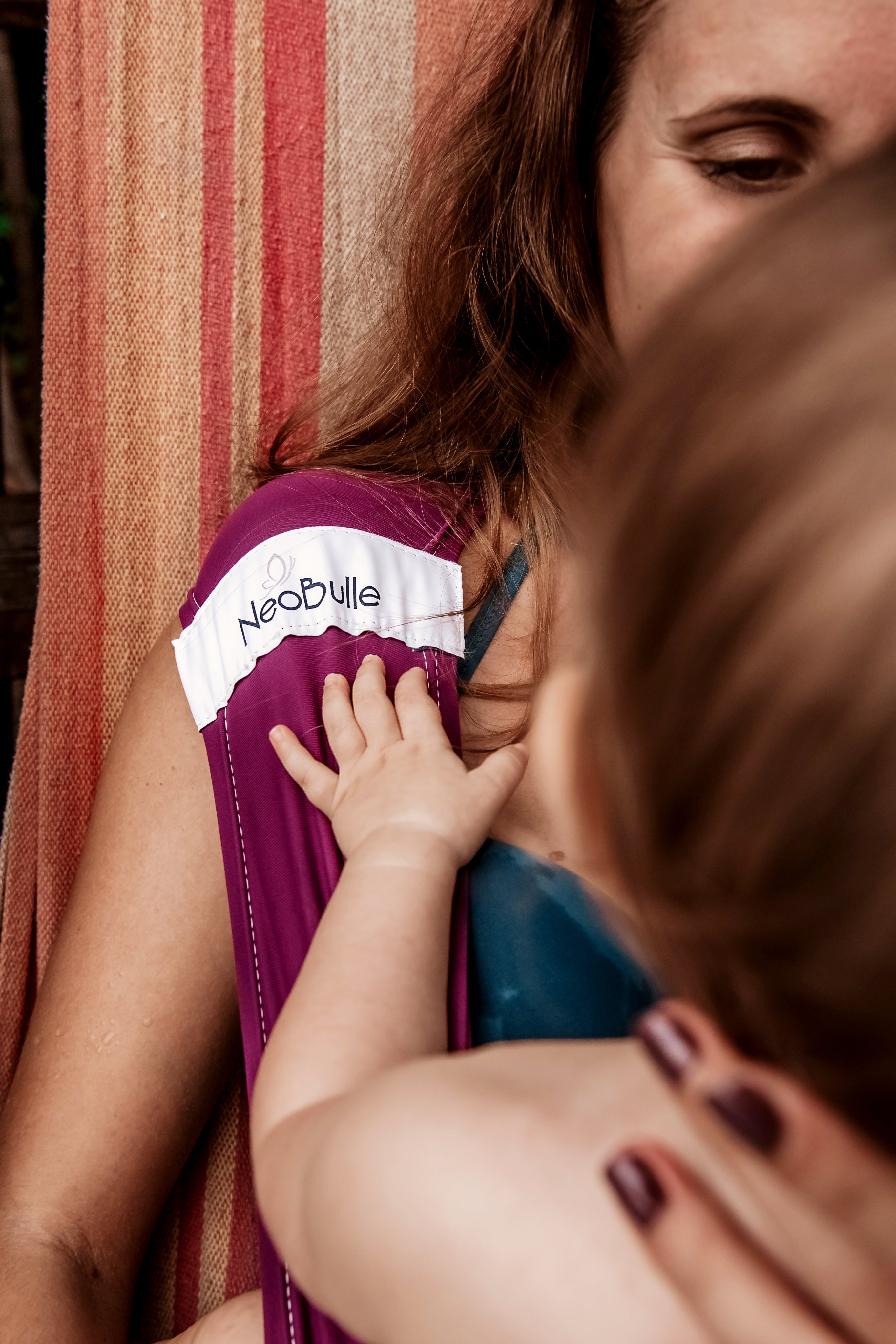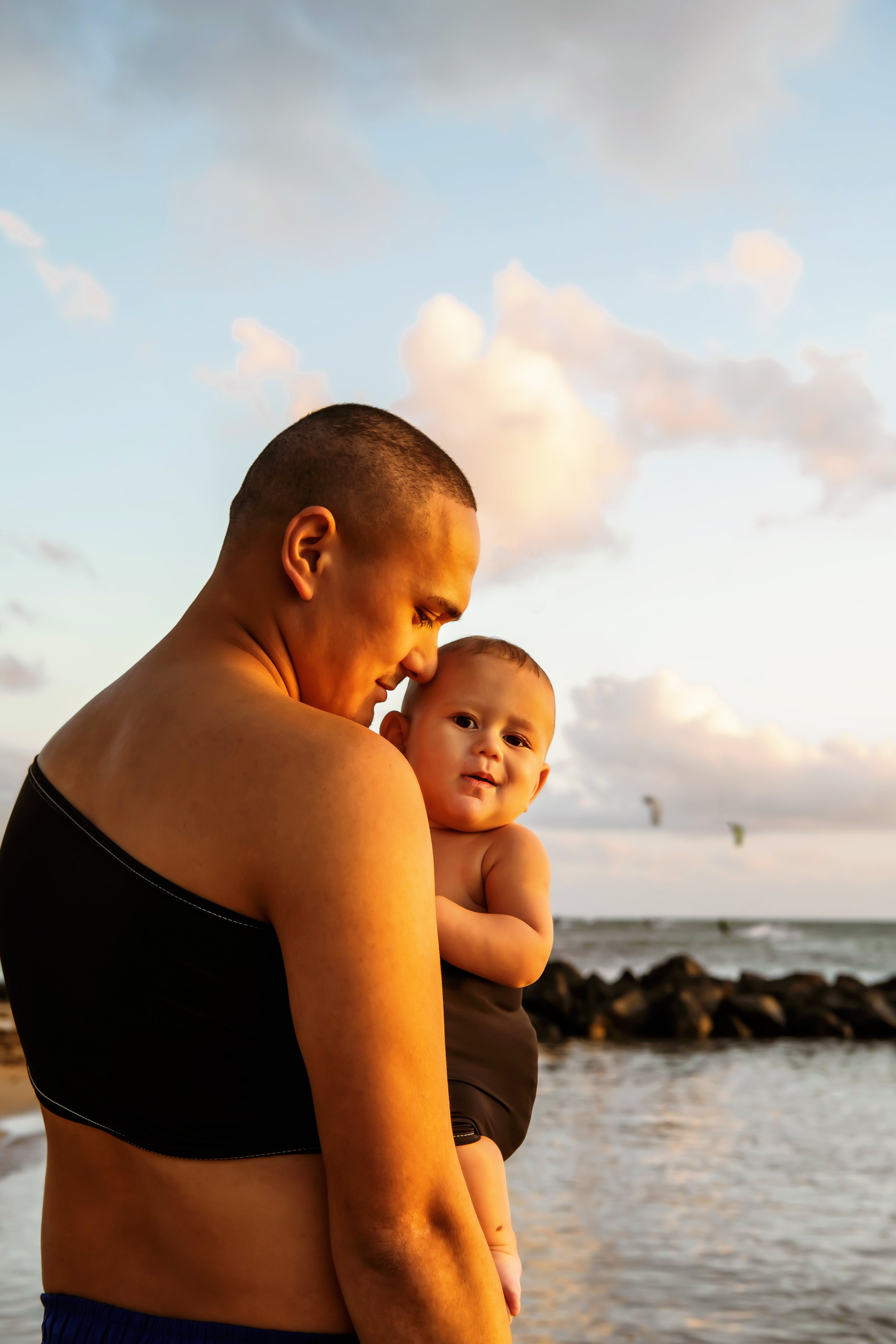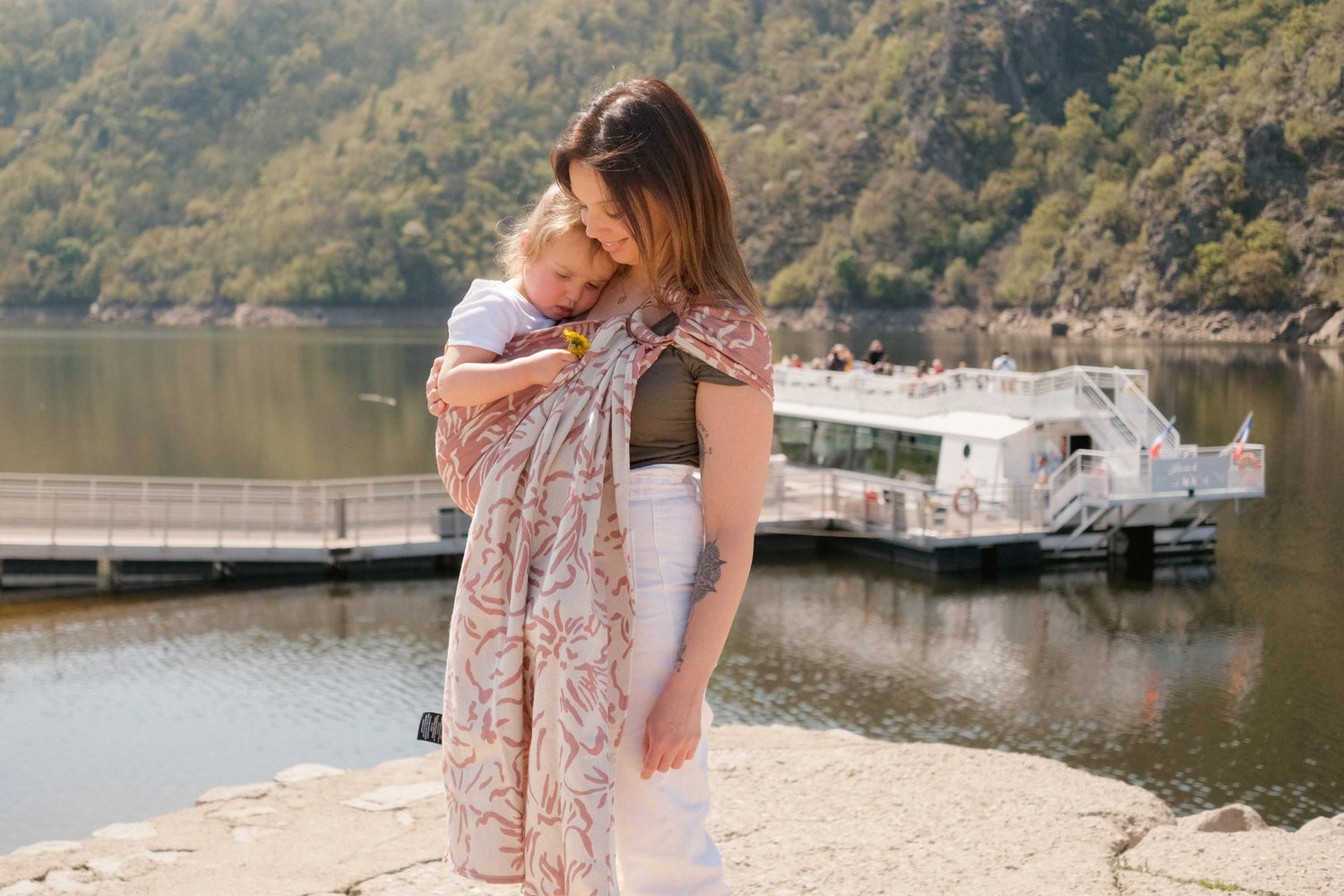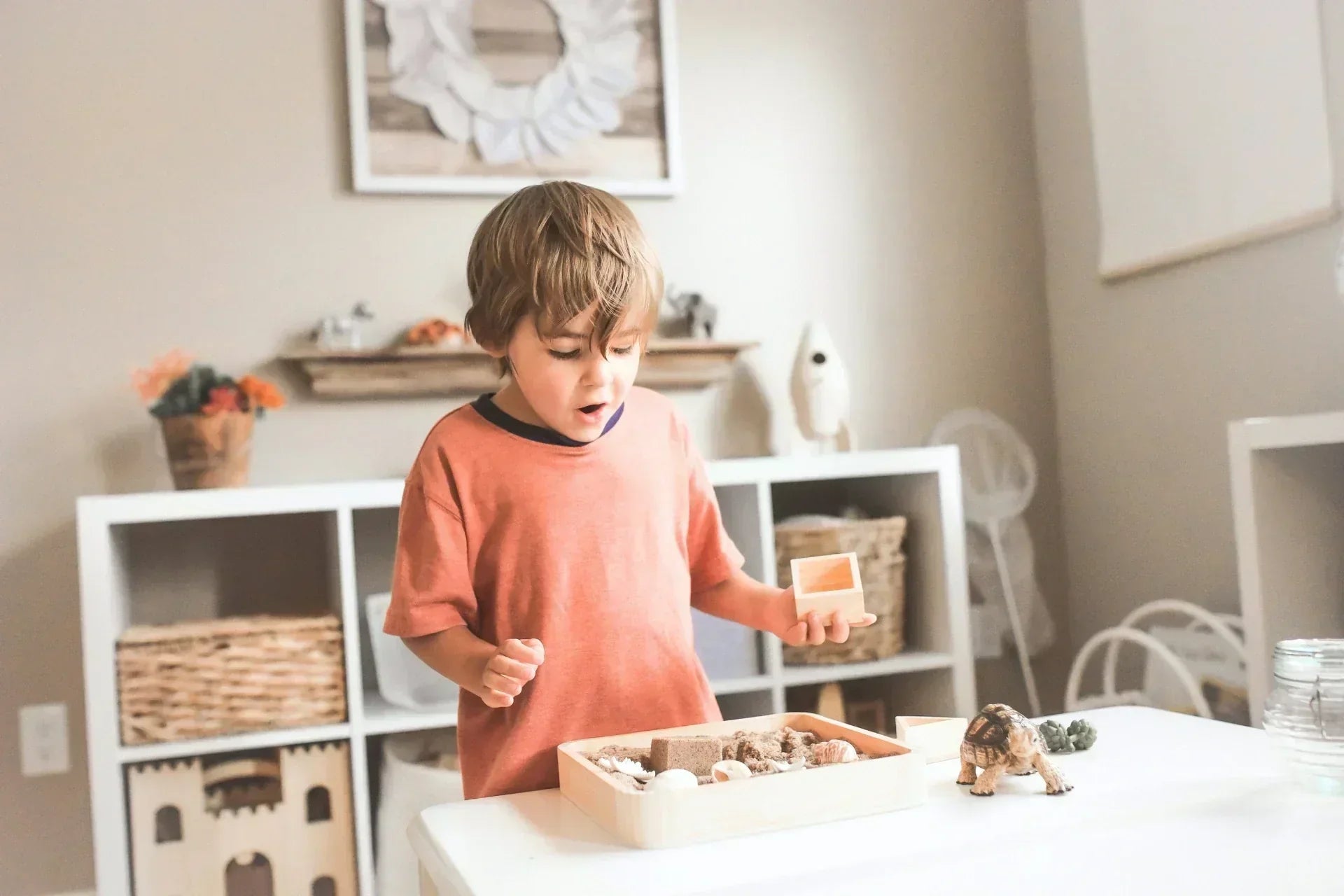Traveling with a baby is possible! It requires a bit of planning in advance. Using a baby carrier while traveling is a compact, practical, and reassuring solution. Carrying your baby accompanies you through airports, train stations, or rough paths, so you can explore with your family!
But then, what type of carrying method is most suitable depending on the child's age, the destination, or the weather? We help you make the right choice for trips that combine serenity and comfort!
Summary
- Why use a baby carrier when traveling?
- Baby carrier while traveling: which model to choose based on your destination?
- What reflexes to adopt in hot countries?
- Which baby carrier depending on the mode of transport?
- Focus: the hiking baby carrier, not so suitable for travel
- Travel-specific checklist: what to take with your baby carrier?
- FAQ: Baby carrier while traveling: essential questions!
- In summary: the baby carrier while traveling, a real ally
Why use a baby carrier when traveling?
Planning a family trip soon? Whether your stay lasts a weekend or several weeks, planning your local trips by packing a carrying device in your luggage can be essential! Indeed, using a baby carrier while traveling allows you to:
- Facilitate your movements in places inaccessible to strollers like the beach or certain hiking trails,
- Comfort the baby in public transport (train, plane, bus...) by meeting their proximity needs
- Keep your hands free to carry suitcases or passports
- Travel light, by leaving your stroller at home (about 7kg for a travel stroller compared to 500 grams for a My Neo baby carrier!)
- Promote your baby's sleep, wherever you are, they can sleep against you!
- Introduce the world at adult height, and offer a 360° field of view, broader than when your baby is lying down or sitting in a stroller
Baby carrier while traveling: which model to choose based on your destination?
Preformed baby carrier: intuitive and quick to install
The preformed baby carrier, which simply clips on, is perfect for long trips or extended walks. However, ensure you choose a model that respects the physiological position (rounded back, pelvis tilted forward, knees raised). It should therefore be flexible and adjustable in width and height.
Ideal for:
- Public transport (airport, train station...)
- Visiting towns and villages
- Hiking, for example on the back if your baby is at least 3/4 months old

The mei-tai: the perfect compromise between a wrap and a baby carrier!
On a daily basis, the carrier wrap proves to be extremely comfortable and versatile. However, on vacation, it sometimes takes a little practice to tie it outside or in transit. If you are looking for a carrying method that combines the comfort of a wrap and the quick setup of a baby carrier, the mei-tai will undoubtedly meet your needs!
For example, the Pti-Evo from Néobulle is a very flexible mei-tai, made of tie straps and a clip-on belt. Suitable from birth to 2 years, it is compact and easily fits into a bag. Light and adjustable, it suits all sizes. Its adjustment is intuitive, no need to tighten multiple straps!
Ideal for:
- Parents seeking the comfort of a wrap with the quick setup of a baby carrier
- An intuitive setup, without the need for precise adjustments beforehand
- Going for walks with the baby from birth, whether hiking or visiting
- Installing the baby in different ways, for example in front, on the hip, or on the back
The sling: the hands-free kit for holidays
Choosing a baby carrier for travel often involves a specific constraint: bulkiness. If you are looking for a solution to carry your baby as an emergency option, other than in your arms, the sling can be the perfect solution. Ultra-light and flexible, you can pre-install it on yourself and put the baby in when necessary in just 10 seconds! Once folded, it barely takes up the size of a rolled-up T-shirt!
It is also a particularly breastfeeding-friendly carrying method. With a sling, the carry is asymmetrical, so you will only have fabric on one shoulder. If you have scoliosis or back problems, favor a symmetrical carrying method (baby carrier, mei-tai...).
Ideal for:
- Having a backup solution both in town and at the beach
- Short trips
- The connections between train / plane
- Breastfeeding discreetly
- Parents looking for an ultra-compact solution
⚡️At Neobulle, there are two types of slings: the MySling stretchable (recommended from birth to 8/9 kilos) and the woven slings (adapted from birth to 3/4 years as an extra).

What reflexes to adopt in hot countries?
In summer or in the tropics, opt for a baby carrier for travel that combines the following two criteria: lightweight and breathable! So choose:
- Natural materials like organic cotton or seacell
- Models that are used in a single layer
- Installations that promote air circulation
Which baby carrier depending on the mode of transport?
Baby carrier for travel and plane:
A carrying method will prove very useful upon your arrival at the airport. Between security checks, waiting at boarding, managing luggage, and long lines, having the baby close to you frees your hands and keeps the child secure in often stressful environments. It also helps soothe a tired or restless baby. This is particularly useful during delayed flights or layovers.
If your baby is active, you can also walk the aisles of the plane during the flight to help them fall asleep.
Good to know: many airlines allow carrying during the flight, provided the child is in their seat or bassinet at takeoff and landing.
Baby carrier for travel and train:
In train stations and train cars, your baby carrier becomes your best ally. Platforms are sometimes narrow and crowded, stairs numerous, and elevators often out of service or occupied. Instead of having to carry a stroller up the stairs or feeling like you're invading the aisle in a crowded car, carrying allows you to move freely, even between train cars.
Bonus: baby feels reassured by your proximity, which can help them fall asleep more easily during the journey. You also gain a space for a carry-on bag, as your carrying method is considered an accessory.
Baby carrier while traveling and in the car:
In the car, baby must be installed in an approved car seat for the trip. The Securange website is a treasure trove of information on the subject!
However, during rest stops at a highway rest area, carrying is very practical for getting some fresh air, breastfeeding, or changing the baby without having to take the stroller out of the trunk. For example, if you need to enter a busy service station or go to the bathroom with the baby, the baby carrier allows you to keep your child close while having your hands free. A real time-saver and efficiency boost in sometimes stressful moments.
Focus: hiking baby carriers, not so suitable for travel
While browsing a sporting goods store, you may have discovered hiking baby carriers. It’s legitimate to question a potential purchase.
However, these are very heavy baby carriers, made of a very rigid metal structure weighing about 3kg, to which the weight of your child is added. Once folded, they remain bulky: impossible to slide into a tote bag or carry-on suitcase. Additionally, the weight distribution is not ideal, and if your baby falls asleep, their head will sway to the side, and they cannot rest it on your chest, which may cause discomfort at the cervical level.
As you have understood, opting for a traditional baby carrier provides a more suitable solution, usable daily as well as during travel.

Travel checklist: what to take with your baby carrier?
Travel checklist: what to take with your baby carrier?
✅ 1 ergonomic, lightweight, and compact carrying method
✅ A cloth to prevent sweating
✅ Clothing suitable for the climate
✅ A mist sprayer / fan if it's hot
✅ The changing bag
FAQ: Baby carrier for travel: the essential questions!
What baby carrier for a newborn when traveling?
With an infant, opt for a sling or an adjustable baby carrier in width and height. The My Neo, for example, is the smallest model available on the market in France! The Neo version, suitable up to 2 years old, is also suitable from birth.
Can I carry a baby on the plane?
Yes, it is perfectly possible. First, before boarding. Then when boarding. And also once in the air, if flight conditions allow you to stand up from your seat. Once you arrive at your destination, your carrying method will once again be valuable to fully enjoy!
What to do if my baby cries in public transportation and I am worried about disturbing others?
We all have different sensitivities to babies' cries. It’s not easy, as a young parent, to manage the sometimes oppressive gaze of people around us. These people are adults: they can listen to music, wear headphones, change train cars, or move away if your baby’s crying becomes too difficult for them. You are doing your best to support your child.
Which model to prefer so that carrying is accessible to both parents?
To avoid too many adjustments between two carriers, many parents opt for the sling or the mei-tai. Indeed, these two options are directly adjustable to the carrier's size. Their adjustments are minimalistic and intuitive!
How to prevent the baby from overheating?
If you want to practice carrying in a hot country, adapt the way your baby is dressed to favor breathable fabrics. Slip a damp cloth between your chest and theirs, and choose the coolest hours and shaded areas. Opt for a lightweight and less enveloping carrier like a baby carrier or sling. And finally, for the comfort of the whole family, carry a fan or a mist sprayer in your bag.
In summary: the baby carrier for travel, a real ally
Carrying a baby when traveling makes life easier, reassures the baby, and allows you to enjoy your vacation with more freedom. In the city, at the beach or in the mountains, by plane, train or car: the baby carrier remains essential for young parents.
No need to buy a model specifically designed for hiking: choosing a solution suitable for both daily life and travel ensures savings and a sustainable choice.





